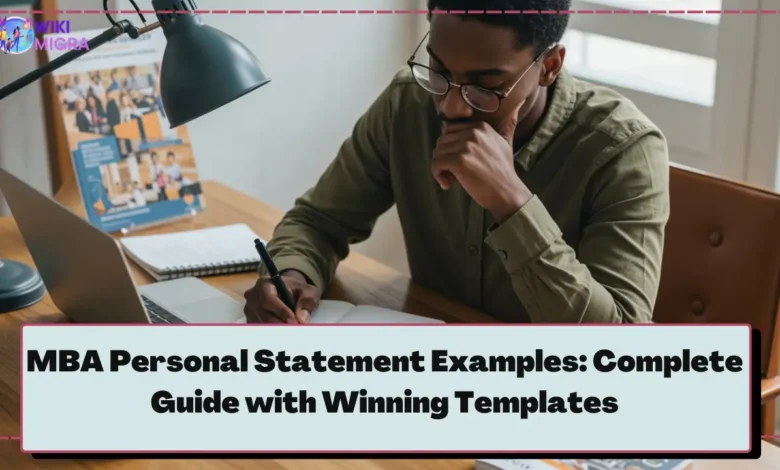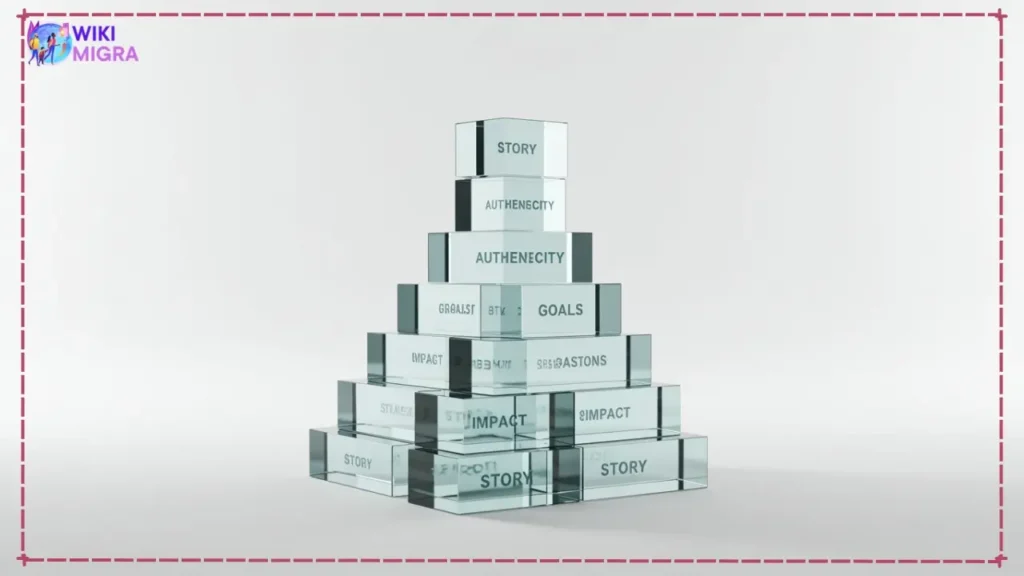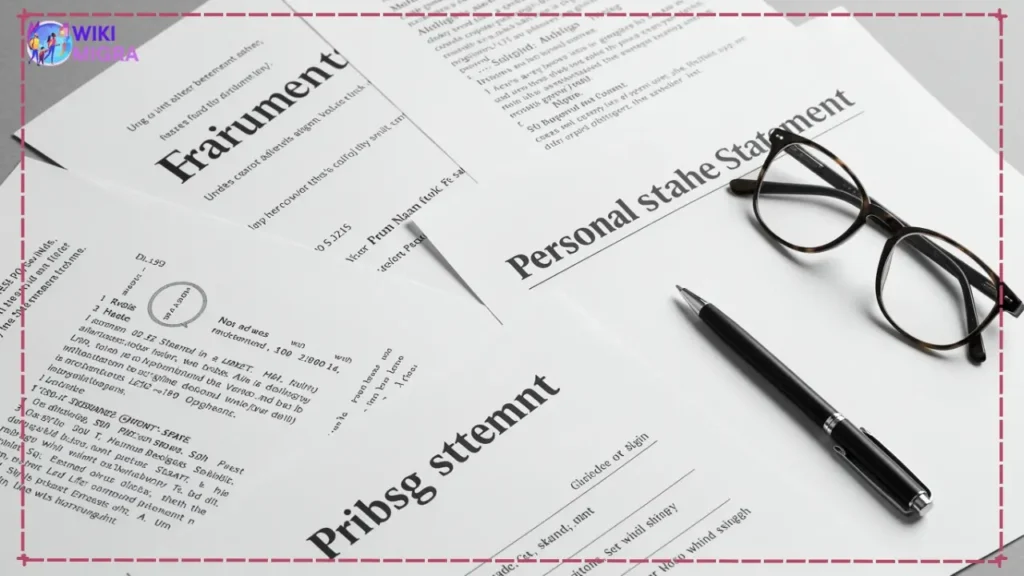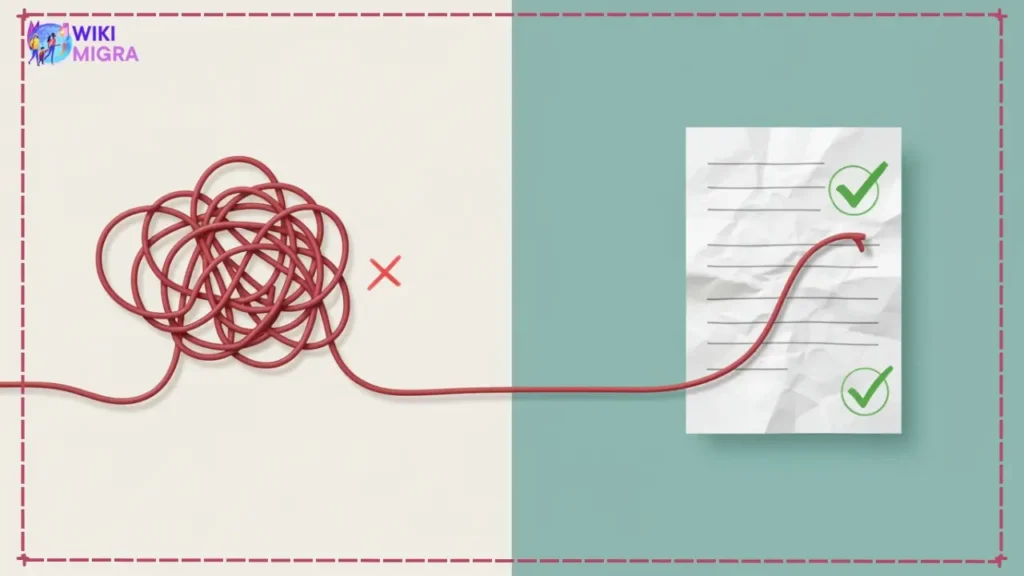MBA Personal Statement Examples: Complete Guide with Winning Templates

Staring at a blank page, wondering how to craft compelling MBA personal statement examples that will capture an admissions committee’s attention? You’re not alone. The MBA personal statement represents one of the most critical—and challenging—components of your business school application. This single essay can make or break your chances of admission to your dream program.
What you’ll discover in this guide: Proven MBA personal statement examples, expert analysis of what makes them work, and a step-by-step blueprint for writing your own compelling narrative. Whether you’re crafting your first draft or refining your final version, you’ll discover actionable strategies from the best MBA personal statement examples used by successful MBA candidates who secured admission to top-tier programs.
An MBA personal statement serves as your opportunity to showcase authenticity, demonstrate self-awareness, articulate clear goals, highlight your potential impact, and prove your fit with the program—all while telling a compelling story that sets you apart from thousands of other qualified applicants. The most effective MBA personal statement examples demonstrate these qualities through specific stories and measurable achievements.
➡️ Learn more about: MBA Specializations: The Complete Guide to Choosing Your Path to Career Success
🧱 Part 1: Understanding the Foundation of a Winning MBA Personal Statement

What Do Admissions Committees Really Look For in MBA Personal Statement Examples?
What is the primary goal of an MBA personal statement? The primary goal extends far beyond simply describing your background. According to Harvard Business School admissions guidelines, admissions committees use your personal statement to evaluate five critical dimensions. The best MBA personal statement examples consistently demonstrate these elements:
🎯 The Five Pillars of Successful MBA Essays
- Authenticity – Your genuine voice and real experiences
- Self-awareness – Critical reflection and emotional intelligence
- Clear goals – Specific, well-researched career objectives
- Impact potential – Ability to create meaningful change
- Program fit – Understanding of school-specific resources
Key Elements of a Strong Narrative in MBA Application Essays
The most compelling MBA essay examples follow the “Show, Don’t Tell” principle. Rather than stating “I am a strong leader,” successful applicants demonstrate leadership through specific stories and measurable outcomes.
Storytelling Techniques for MBA Essays:
- STAR Method – Situation, Task, Action, Result
- Challenge-Action-Result framework
- Before-After-Bridge narrative structure
Common Themes & How to Approach Them
Based on analysis from top MBA consulting firms, successful MBA statement of purpose examples typically address these themes:
📝 MBA Essay Theme Checklist
- Leadership experience with quantifiable impact
- Teamwork and collaboration examples
- Overcoming significant challenges
- Clear post-MBA career objectives
- Compelling reason for pursuing MBA now
➡️ Learn more about: MBA Program Types: The Definitive 2025 Guide
📄 Part 2: Diverse MBA Personal Statement Examples with In-Depth Analysis

The following MBA personal statement examples represent diverse backgrounds and career trajectories. Each example includes expert analysis to help you understand what makes these statements effective. These MBA personal statement examples have been carefully selected to demonstrate different approaches while maintaining the core elements that admissions committees value most.
Example 1: The Career Changer Focusing on Impact – MBA Personal Statement Examples
The Full Example Text
“Three years ago, I stood in a refugee camp in Jordan, watching a Syrian engineer explain to his daughter why she couldn’t attend school. Despite his expertise in renewable energy systems, he couldn’t afford the $50 monthly fee. That moment crystallized my understanding of how business innovation could address humanitarian challenges—and why I needed an MBA to scale my impact.As a software engineer at Google, I had built algorithms affecting millions of users, but I craved direct human impact. This realization led me to volunteer with TechRefugees, where I developed a mobile app connecting displaced professionals with remote work opportunities. Within 18 months, our platform facilitated over $2.3 million in earnings for 1,200+ refugees across 15 countries.However, scaling social impact requires more than technical skills—it demands strategic thinking, financial acumen, and leadership capabilities. Columbia’s MBA program offers the perfect combination: Professor Lieberman’s Social Enterprise coursework, the Lang Center for Entrepreneurship, and access to impact investors through the Alumni network. My goal is to launch a social enterprise fund focused on refugee economic integration, leveraging blockchain technology for transparent impact measurement.Post-MBA, I envision leading a $100M impact fund that creates sustainable livelihood opportunities for displaced populations while generating market-rate returns for investors. Columbia’s emphasis on both social responsibility and rigorous business fundamentals will prepare me to transform humanitarian challenges into scalable business solutions.”
Why This Statement Works: Expert Breakdown
Key Strengths:
- Compelling hook: Opens with vivid, specific scene that immediately engages reader
- Clear motivation: Explains the transition from tech to social impact with authentic reasoning
- Quantifiable achievements: Provides specific metrics ($2.3M earnings, 1,200+ refugees)
- School-specific research: Mentions particular professors, centers, and resources
- Future vision: Articulates concrete post-MBA goals with measurable impact
- Logical progression: Connects past experience → current gap → MBA solution → future goals
How to Write MBA Personal Statement: Step-by-Step Analysis
Both MBA personal statement examples above follow proven frameworks that you can adapt for your own MBA application essay. When analyzing successful MBA personal statement examples, notice how each applicant:
Universal Success Formula:
- Opens with a specific, memorable scene
- Connects personal background to professional goals
- Demonstrates growth and learning from experiences
- Identifies specific skill gaps that MBA will address
- Shows detailed knowledge of target school
- Articulates clear, achievable post-MBA objectives
➡️ Learn more about: MBA Career Paths: The Complete Guide to Post-MBA Opportunities in 2025
📝 Part 3: How to Write Your Own Standout MBA Personal Statement: A Step-by-Step Guide

Step 1: Brainstorming & Self-Reflection
Before writing your first word, successful applicants spend 10-15 hours on deep self-reflection. According to MBA.com’s official guidance, this preparation phase determines whether your essay will stand out or blend into the pile.
🤔 Self-Reflection Exercise
- What are your 3 most significant professional accomplishments?
- When did you demonstrate leadership in challenging situations?
- What failures taught you valuable lessons?
- Why do you need an MBA specifically (not just any graduate degree)?
- What will you contribute to your target school’s community?
Step 2: Outlining Your Narrative
The most effective MBA essay templates follow a logical structure that guides readers through your story:
📝 Proven MBA Essay Structure
| Section | Word Count | Purpose |
|---|---|---|
| Hook & Context | 75-100 words | Grab attention, set scene |
| Background & Growth | 200-250 words | Show progression, key experiences |
| Why MBA Now | 150-200 words | Explain timing, skill gaps |
| School Fit & Goals | 175-225 words | Connect school resources to objectives |
Step 3: Crafting the First Draft
When writing your first draft, focus on getting your story down rather than perfecting every sentence. Professional admissions consultants from leading consulting firms recommend this approach for how to write MBA personal statement drafts effectively.
Step 4: Refining and Editing
The difference between good and great MBA personal statement examples often lies in the editing process. Successful applicants typically go through 8-12 draft iterations before submitting.
Editing Checklist for MBA Essays:
- ✅ Every sentence advances your narrative
- ✅ You show rather than tell throughout
- ✅ Specific examples support each claim
- ✅ Transitions flow naturally between paragraphs
- ✅ Your authentic voice comes through clearly
- ✅ You directly answer the essay prompt
➡️ Learn more about: MBA Application Process: Your Complete Guide to Business School Success in 2025
⚠️ Part 4: Common Mistakes to Avoid in MBA Application Essays

After reviewing thousands of applications, admissions committees consistently identify these critical errors in MBA statement of purpose examples:
❌ Mistake 1: Generic, Template-Based Essays
The Problem: Using the same essay for multiple schools with only minor modifications.
Better Approach: Research each program thoroughly and customize your narrative to show specific fit.
❌ Mistake 2: Weak Storytelling and Lack of Specifics
The Problem: Vague statements like “I want to make a difference in the world.”
Better Approach: Provide concrete examples with quantifiable impact and specific future plans.
❌ Mistake 3: Ignoring the “Why MBA, Why Now?” Question
The Problem: Failing to explain why an MBA is necessary for your goals or why this timing makes sense.
Better Approach: Clearly articulate skill gaps that only an MBA can fill and explain your timeline rationale.
⚠️ Red Flags Admissions Committees Notice
- Typos and grammatical errors (shows lack of attention to detail)
- Exceeding word limits (demonstrates inability to follow instructions)
- Negative tone or excuse-making for past failures
- Unrealistic post-MBA goals or vague career aspirations
- Lack of research about the specific program
- Overuse of buzzwords without substance
⭐ Part 5: Advanced Tips & Strategies for MBA Essay Excellence
Addressing Weaknesses in Your Application
The most sophisticated MBA personal statement examples strategically address potential concerns without dwelling on negatives. According to admissions experts at Poets&Quants, successful applicants use their essays to reframe weaknesses as growth opportunities.
🎯 Strategic Weakness Management
| Common Weakness | Reframing Strategy | Example Approach |
|---|---|---|
| Low GPA | Show recent academic excellence | Highlight CFA, professional certifications, or recent coursework |
| Limited Leadership | Define leadership broadly | Include project leadership, mentoring, community involvement |
| Career Gaps | Emphasize purposeful experiences | Frame as valuable learning, skill development, or family priorities |
Showcasing “Fit” Beyond Just Saying It
Exceptional MBA essay examples demonstrate program fit through specific details rather than generic statements. Research from ClearAdmit’s admissions analysis shows that detailed school knowledge significantly improves acceptance rates.
Deep Fit Demonstration Strategies:
- Name specific professors and explain how their research aligns with your interests
- Reference unique programs (study abroad, consulting projects, speaker series)
- Mention student organizations you plan to join or lead
- Connect with current students and reference those conversations
- Attend information sessions and reference insights gained
The Role of Optional Essays
Many applicants underestimate optional essays, but they provide crucial opportunities to share additional MBA essay examples that strengthen your candidacy. Top admissions consultants recommend using optional essays strategically.
Incorporating Quantitative Achievements Effectively
The best successful MBA essays seamlessly weave quantitative achievements into compelling narratives. Rather than listing accomplishments, they embed metrics within story contexts that demonstrate impact.
💼 Quantitative Integration Examples
❌ Weak Approach
“I increased sales by 25% and managed a team of 12 people while reducing costs by $200K.”
✅ Strong Approach
“When our biggest client threatened to leave due to service issues, I assembled a cross-functional team of 12 specialists to redesign our delivery process. The new system reduced client complaints by 80% and increased satisfaction scores from 3.2 to 4.7, ultimately retaining $200K in annual revenue.”
💬 MBA Personal Statement FAQ
How long should my MBA personal statement be?
Most MBA programs specify word limits ranging from 500-750 words for personal statements. Always follow the exact requirements for each school. According to Columbia Business School’s guidelines, exceeding word limits can result in automatic disqualification. Use every word strategically—admissions committees appreciate conciseness and precision.
Can I reuse parts of my MBA essay for different schools?
While you can reuse your core story and experiences, each essay must be significantly customized for the specific program. The “Why this school” sections should be completely unique, demonstrating thorough research of each program’s distinctive features. Successful MBA application essays show clear understanding of what makes each school special.
Should I hire an MBA admissions consultant?
An admissions consultant can provide valuable feedback, especially if you’re applying to highly competitive programs or have unique circumstances to address. However, your essay must reflect your authentic voice. The best consultants help you refine your own ideas rather than writing for you. Consider your budget, timeline, and confidence level when making this decision.
What if I don’t have a “dramatic” transformation story?
Authenticity trumps drama every time. Many successful MBA personal statement examples feature steady career progression rather than dramatic pivots. Focus on demonstrating growth, learning, and clear goals. Admissions committees value genuine reflection and realistic ambitions over manufactured excitement.
How personal is too personal in an MBA essay?
Share personal details that directly relate to your professional development and MBA goals. Avoid overly intimate details about relationships, health issues, or family problems unless they significantly shaped your career trajectory. The key is relevance—every personal detail should advance your professional narrative.
When should I start writing my MBA personal statement?
Begin the brainstorming process 3-4 months before application deadlines. Allow 6-8 weeks for writing and revision cycles. The most compelling MBA essay examples result from extensive reflection and multiple draft iterations. Starting early reduces stress and allows time for feedback from trusted advisors.
Conclusion: Your Path to MBA Success
Crafting exceptional MBA personal statement examples requires time, reflection, and strategic thinking. The most successful applicants understand that their personal statement serves as more than just an application requirement—it’s an opportunity to demonstrate the qualities that will make them valuable MBA students and future business leaders.
Key Takeaways for Your MBA Essay Success:
- Start with authentic self-reflection and compelling stories
- Demonstrate clear progression from past experiences to future goals
- Show specific knowledge of your target programs
- Use concrete examples and quantifiable achievements
- Address potential weaknesses strategically
- Allow ample time for multiple revision cycles
Remember that the most impactful how to write MBA personal statement approach involves showing admissions committees who you are through your actions, achievements, and aspirations. Your unique background, experiences, and goals form the foundation of a compelling narrative that no other applicant can replicate.
📚 Additional Resources for MBA Success:
- Stanford Graduate School of Business Application Tips
- Kellogg School of Management Admissions Guide
- Chicago Booth MBA Application Process





